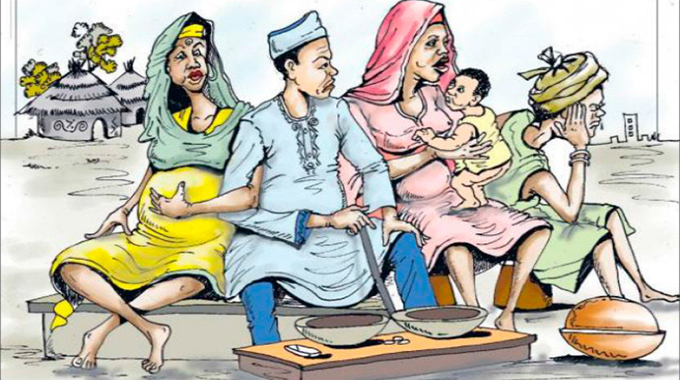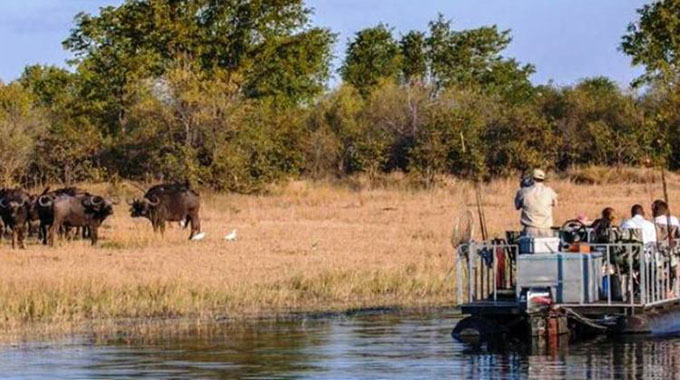The battle of Negomo Tribal Trust Lands
slope of a hill. White Rhodesians named it Negomo Primary School, a corruption of Negomo Mapunzagutu, the son of Nyatsimba Mutota, for the legendary Mutota or Munhumutapa died a spiting distance away from this school. The place of his death is called Tuwuyu Tusere, the eight baobab trees.
On the southern verge of this land is a flat land on the foot of Matusadonha mountains, (misspelled from Matuzviadona) by the same whites. This land the whites named Horseshoe Commercial Farming Area.
There is stark difference between these two lands.
Nyagomo Tribal Trust Lands is rugged and there is nowhere to farm except on hill slopes and riverbeds. Horseshoe is fertile and flat prime farming land.
Negomo is on the rain shadow region of the mountains while Horseshoe is the rain-ward side. During the rainy season, it rains on a daily basis in Horseshoe.
Negomo can be tinder dry or bone dry.
Apparently, all the people settled on this inhabitable stretch were initially the owners of the land now called Horseshoe, but had been displaced by white Rhodesians and pushed to Negomo.
While the villagers were largely and openly subservient to the white farmers, providing labour at times, they still remained pained and inwardly determined to take back their land.
When the war of liberation broke out, this villager’s father was teaching at Negomo. The headmaster of the school, a Mr Chimbumu, kept Karigoni chicken.
Karigoni is the small chicken. You can call them the dwarf chicken but they lay more eggs than the normal chicken. The Karigoni cock, never missed time. It crowed on time. Midday, midnight, pre-dawn . . . midday etc. It never missed the time. It was a good clock.
One wintry morning there was a gunshot sound.
The interlocking hillocks and valley bellow made the sound even worse. The gunshot sent Karigoni crowing at the wrong time. Something was amiss.
By sunrise, the school had rare visitors.
Two Rhodesian army Land Rovers had pulled to a rattling halt at the headmaster’s house. At the back of one of the trucks was something covered in plastic.
The headmaster subsequently woke up all his teachers at the insistence of the soldiers. The 6am bell cranked and one-by-one pupils came to school, from Chiropa, Gondo, Gezi, Chiputura, Muzika, Kazunga, Chivanga and Chizanga villages and so on.
The school’s 7:30am parade was taken over by the Rhodesian soldiers. The leader was a huge white man.
He had yellow undisciplined teeth, a wide forehead, huge ears, a bushy face and long hairy limbs. His eyes were big and surprisingly white. His voice was deep and fierce, especially for black children, who had hardly come face-to-face with a white man.
One-by-one the teachers and their pupils were forced to form a beeline to the truck where, lo and behold, a black man had been shot in the back of the head and the bullet had ripped of a huge chunk of his forehead. It was a horror that defied diction.
Some children fainted, but the soldiers could not stop their exhibition. They wanted the message to sink into the minds of the pupils.
The o-ohs, a-ahs, I-his, the fainting stints were all misinterpreted by the Rhodesian soldiers to mean the message was well-received.
The parade then turned to teachers’ wives and their children. There was no age limit.
By mid-morning, villagers had been collected from their homes and force-marched to see a gandanga.
By this time, the body was becoming bad.
Green bomber flies were making effortless somersaults around the huge wound.
A black soldier was using a tree branch to ward of the flies. It sent shivers. It sent shocks. It sent anger. No one spoke. It was casting an eye. Silence . . . silence . . . silence. Sigh. Casting eye, silence. Whispers. Tears. Silence . . . silence . . . silence! Silence!
The soldiers wanted to make a point that that was how they treated guerrillas, a term they used to refer to freedom fighters. To be honest, very few had really seen a freedom fighter, that time. Equally few people had seen gunshot wounds. The gun.
After the infamous show, it emerged that the alleged guerrilla was Baba VaKatonje, a villager who had gone to the fields before sunrise to pick cotton tufts.
Everyone one knew him as a villager.
The story turned the tide against the Rhodesian soldiers. It made the villagers and the teachers combative and confrontational to the Rhodesian Front.
After all, in the village is it not taboo to show a corpse to children still milking behind their ears?
This villager, was haunted by the image of the deceased for almost 20 years.
Even at high school this villager found it hard to sleep in the dark, without being visited by the image of the deceased. So bad was the effect.
Years later, war become a reality.
It became pronounced. The real freedom fighters came and held meetings with the villagers and teachers, winning them to their side.
The story of Baba VaKatonje and the land dispossessions inspired the war, together with a buffet of other inhuman treatments of blacks.
There was a cocktail of things that ganged the villagers against the Rhodesian Front.
The Matusadonha Mountains with their caves and many hiding places, the ill-defined border with Mozambique, the thick bush and undulating slopes that fly for hundreds of kilometres made it easy to host the boys, as the freedom fighters were sometimes referred to.
While the freedom fighters operated from the village, the Rhodesian front connived with white farmers from Horseshoe to patrol and raid the Negomo Tribal Trust Lands, the name of which even insulted the blacks by insinuating that even the small land left in their hands was being held in trust of the Rhodesian Government.
One such raid remains perched in the memory box of this villager’s brain.
It was about mid-morning and teachers being teachers then, used to take breakfast concurrently outside their school house.
Reed mates stretched flat, strong milked-tea, butter, jam and bread. Karigoni eggs. Each family sitting outside and enjoying before the teachers go back to class.
It normally took 15 minutes for the break was just 30 minutes. Sporadic gunshots. Silence. Gunshots. A loud Bazooka bang. Silence. A chatting small riffle then again Bazooka ba-hooom! Silence. Suddenly a horse came galloping fast, as if being chased after by lions. It jumped over one puzzled family.
Moments later, a white man came sprinting hard, entered the kitchen of this villager’s mother. He closed the door behind himself. Puffing and panting like fish outside water, he hid.
He must have been the one whose horse had dropped him off in the battle. He was scarred all over. Bush thorns had torn into his flesh.
His face had blushed.
After him was a freedom fighter. A strongly built young man. Spot on, the freedom fighter saw the white man enter into the house and went for him.
He tried to push the door open but the white man stood his ground, his back to the door. He must have seen it as a matter of life and death.
The guerrilla, who sweated profusely, had dead pimples dotted on his forehead.
He pushed harder until the door opened.
At the same time, three other guerrillas appeared.
“Don’t kill me . . . please don’t kill me!” shouted the whiteman.
“We will not kill you. We are going with you into the bush!” shouted one of the guerrillas as they dragged him towards Kadzi River.
Meanwhile pupils, teachers and their wives had gathered around to see the spectacle.
Three more horses galloped past in the direction of Horseshoe.
No one followed them.









Comments